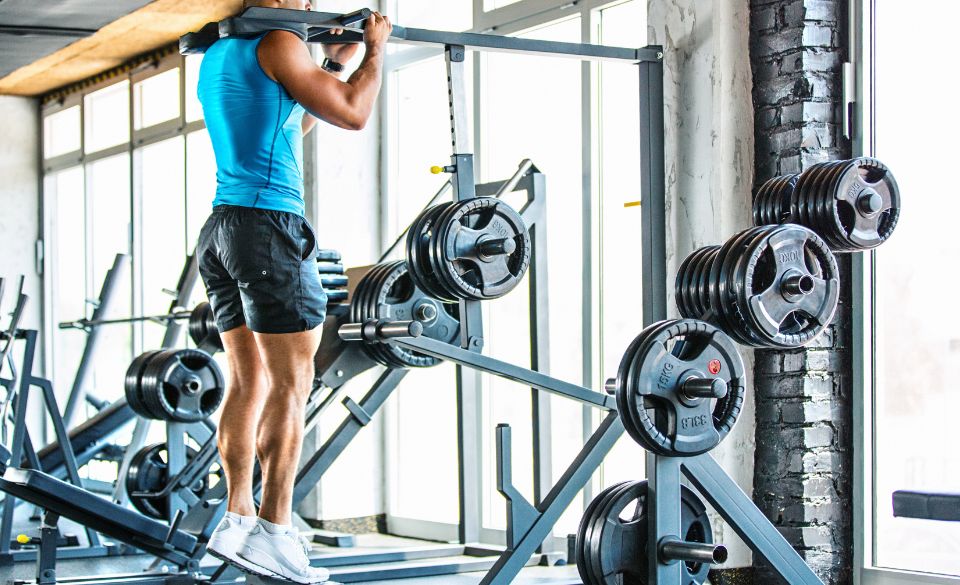
Best Leg Exercises for Runners
Page Contents
As a runner, you know that your legs are your powerhouse. They carry you through every stride, absorb impact, and generate forward propulsion. To improve your running performance and prevent injuries, it’s crucial to strengthen your leg muscles. In this article, we’ll explore the best leg exercises specifically tailored for runners. Incorporating these exercises into your training routine will help you develop strength, stability, and endurance in your lower body.
Why Should You Do Leg Exercises?
Leg exercises are a fundamental component of any runner’s training regimen. While running primarily engages the lower body, dedicating time to specific leg exercises offers numerous benefits that can enhance your running performance.
First and foremost, leg exercises improve your running performance by building strength, power, and endurance in the muscles used during running. By targeting key muscle groups such as the quadriceps, hamstrings, glutes, and calves, you can enhance your ability to generate force and propel yourself forward. Strengthening these muscles allows you to run faster, tackle challenging terrains with ease, and maintain a more efficient stride.
In addition to performance benefits, leg exercises play a crucial role in injury prevention. Weak leg muscles can lead to imbalances and inadequate support for your joints, increasing the risk of injuries such as shin splints, IT band syndrome, and knee pain. By strengthening the muscles around your knees, hips, and ankles, leg exercises provide stability and reduce the stress placed on your joints. This helps minimize the risk of overuse injuries, ensuring a more sustainable and enjoyable running experience.
Leg exercises also contribute to enhanced endurance, a vital factor in running, especially for longer distances. Running requires significant leg endurance to endure the repetitive impact and strain. By training your legs through exercises like lunges, squats, and plyometric movements, you can improve muscular endurance and delay the onset of fatigue during your runs. This translates to being able to maintain a steady pace for longer distances and achieve your running goals.
Furthermore, leg exercises are essential for promoting better running form and biomechanics. Weak legs can lead to compensatory movements, such as overpronation or excessive heel striking, which can negatively impact your running efficiency and increase the risk of injuries. Leg exercises, along with proper running technique, can improve your stride, promote a more balanced and efficient gait, and optimize your overall running form.
Lastly, leg exercises not only benefit your running performance but also contribute to overall body strength and stability. A strong lower body provides a solid foundation for the rest of your body during running, enhancing overall stability, balance, and control. Strong legs work in synergy with your core and upper body, creating a coordinated and efficient running motion.
By incorporating leg exercises into your training routine, you can unlock your full running potential. Whether you are a beginner or an experienced runner, dedicating time to strengthen your legs will help you become faster, more resilient, and less prone to injuries. Remember to vary your exercises, gradually increase the intensity, and listen to your body to avoid overtraining.
How Weak Legs Affect Your Running Performance
Weak legs can have a significant impact on your running performance. Here are a few ways in which underdeveloped leg muscles can affect your running:
1. Reduced Power and Speed: Strong leg muscles, such as the quadriceps, hamstrings, and glutes, play a crucial role in generating power and propelling your body forward during running. When these muscles are weak, they struggle to generate the force needed for explosive movements, such as sprinting or running uphill. As a result, your speed and ability to push through challenging terrain may be compromised.
2. Instability and Poor Balance: The muscles in your legs, particularly the calves and ankles, are responsible for maintaining balance and stability while running. Weakness in these areas can lead to wobbly movements and an increased risk of ankle sprains or falls. A lack of stability can also affect your running efficiency, making it harder to maintain a smooth and controlled stride.
3. Increased Fatigue: Weak leg muscles tire more quickly, leading to premature fatigue during your runs. This can impact your ability to maintain a steady pace and may hinder your endurance. As your leg muscles fatigue, other muscles may have to compensate, leading to an imbalance and potentially placing additional stress on your joints and connective tissues.
4. Inefficient Biomechanics: Weak leg muscles can result in poor running form and biomechanics. For example, weak glutes may cause your hips to drop and your knees to collapse inward, known as knee valgus. This misalignment can put extra stress on your knees, leading to pain and potential injuries. Inefficient running mechanics can also result in excessive heel striking, overpronation, or an inefficient push-off, which can hinder your running efficiency and increase the risk of overuse injuries.
Addressing weak legs through targeted strength training can help overcome these limitations and improve your running performance. By strengthening the muscles in your legs, you enhance their ability to generate power, maintain stability, and withstand the demands of running. This can lead to increased speed, better balance, improved endurance, and reduced risk of injuries.
Incorporating a variety of leg exercises into your training routine, such as squats, lunges, deadlifts, and calf raises, can effectively target the major muscle groups in your legs. Gradually increasing the intensity and resistance of your workouts, along with proper form and technique, will help you build strength and resilience over time. Remember to listen to your body, allow for adequate rest and recovery, and consult with a healthcare professional or a qualified trainer if you have any concerns or underlying conditions. Strong legs will not only enhance your running performance but also contribute to a more enjoyable and injury-free running experience.
How Often Should You Train Your Legs as a Runner
To effectively strengthen your legs, it’s important to strike a balance between training and recovery. Aim to incorporate leg exercises into your routine two to three times a week, allowing for at least one day of rest between sessions. This frequency allows for adequate rest and recovery, enabling your muscles to repair and grow stronger.
However, it’s crucial to listen to your body and avoid overtraining. Pushing yourself too hard without sufficient recovery can lead to muscle fatigue, increased risk of injuries, and hindered progress. If you experience excessive soreness, prolonged muscle fatigue, or joint pain, consider reducing the frequency or intensity of your leg workouts. Additionally, make sure to include rest days in your training schedule to promote overall recovery and prevent overuse injuries.
10 Best Leg Exercises for Runners
1. Squats: Squats target the quadriceps, hamstrings, and glutes. Stand with your feet shoulder-width apart, lower your body as if sitting back into a chair, and then push through your heels to return to the starting position. Aim for three sets of 10 to 15 repetitions.
2. Lunges: Lunges engage multiple leg muscles, including the quadriceps, hamstrings, glutes, and calves. Step forward with one leg, bending both knees to lower your body toward the ground. Push through your front heel to return to the starting position. Perform 10 to 12 repetitions on each leg for three sets.
3. Deadlifts: Deadlifts primarily target the hamstrings, glutes, and lower back. Stand with your feet hip-width apart, holding a barbell or dumbbells in front of your thighs. Hinge at your hips, keeping your back straight, and lower the weight toward the ground. Push through your heels and squeeze your glutes to return to a standing position. Aim for three sets of 8 to 12 repetitions.
4. Calf Raises: Calf raises strengthen the calves, which are crucial for running propulsion. Stand on the edge of a step or elevated surface, allowing your heels to hang off the edge. Rise up onto your toes, then slowly lower your heels below the step. Perform three sets of 12 to 15 repetitions.
5. Step-Ups: Step-ups target the quadriceps, glutes, and hamstrings. Stand facing a sturdy step or bench. Step one foot onto the step, pushing through your heel, and lift your body up. Step back down and repeat with the opposite leg. Aim for three sets of 10 to 12 repetitions on each leg.
6. Hip Thrusts: Hip thrusts focus on the glutes and hamstrings. Sit on the ground with your upper back against a bench and your knees bent. Place a barbell or weight across your hips and drive through your heels to lift your hips toward the ceiling. Lower back down and repeat for three sets of 8 to 12 repetitions.
7. Single-Leg Squats: Single-leg squats, or pistol squats, target the quadriceps, glutes, and core. Stand on one leg, extend the other leg out in front of you, and slowly lower your body down into a squat position. Push through your heel to return to standing. Perform three sets of 6 to 8 repetitions on each leg.
8. Glute Bridges: Glute bridges activate the glutes and hamstrings. Lie on your back with your knees bent and feet flat on the ground. Push through your heels to lift your hips off the ground, squeezing your glutes at the top. Lower back down and repeat for three sets of 12 to 15 repetitions.
9. Side-Lying Leg Lifts: Side-lying leg lifts target the hip abductors and glutes. Lie on your side with your legs stacked on top of each other. Lift your top leg toward the ceiling, keeping it straight, then lower it back down. Perform three sets of 10 to 12 repetitions on each side.
10. Jump Squats: Jump squats combine strength and plyometric training to improve power and explosiveness. Begin in a squat position, then explosively jump up, reaching for the ceiling. Land softly and immediately lower into another squat. Perform three sets of 6 to 8 repetitions.
Final Words
In conclusion, incorporating leg exercises into your training routine as a runner is crucial for improving performance, preventing injuries, enhancing endurance, promoting better running form, and developing overall strength and stability. The benefits of strong legs extend beyond the running track, allowing you to tackle various terrains, maintain a steady pace, and achieve your running goals.
Several studies support the importance of leg exercises for runners. A study published in the Journal of Sports Sciences found that strength training targeting the lower body improved running economy and increased endurance performance in recreational runners. Another study published in the Scandinavian Journal of Medicine & Science in Sports showed that incorporating resistance training for the lower extremities improved muscle strength and power, leading to enhanced running speed and performance.
Furthermore, a systematic review published in Sports Medicine highlighted the role of leg strength and power in reducing the risk of running-related injuries. By strengthening the muscles around the knees, hips, and ankles, runners can minimize the impact on their joints and reduce the likelihood of common overuse injuries.
To reap the benefits of leg exercises, aim to include a variety of exercises such as squats, lunges, deadlifts, calf raises, and plyometric movements in your training routine. Start with proper form, gradually increase the intensity and weights, and listen to your body to avoid overexertion or injury.
Remember, consulting with a fitness professional or healthcare provider can provide personalized guidance and ensure that you’re performing the exercises correctly and safely. By dedicating time and effort to strengthen your legs, you’ll not only enhance your running performance but also improve your overall fitness and enjoy a more rewarding and injury-free running experience.



